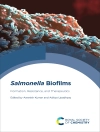The period between 1950 and 1980 were the golden unique insights into how pathological processes affect years of transmission electron microscopy and produced cell organization. a plethora of new information on the structure of cells This information is vital to current work in which that was coupled to and followed by biochemical and the emphasis is on integrating approaches from functional studies. TEM was king and each micrograph proteomics, molecular biology, genetics, genomics, of a new object produced new information that led to molecular imaging and physiology and pathology to novel insights on cell and tissue organization and their understand cell functions and derangements in disease. functions. The quality of data represented by the images In this current era, there is a growing tendency to of cell and tissues had been perfected to a very high level substitut e modern light microscopic techniques for by the great microscopists of that era including Palade, electron microscopy, because it is less technically Porter, Fawcett, Sjostrand, Rhodin and many others. At demanding and is more readily available to researchers- present, the images that we see in leading journals for This atlas reminds us that the information obtained by the most part do not reach the same technical level and electron microscopy is invaluable and has no substitute.
Inhaltsverzeichnis
The Cell.- Principles of Tissue Organisation.
Über den Autor
Professor Margit Pavelka, MD. Studies in Medicine, University of Vienna. Medical training at the Vienna Hospital “Rudolfstiftung” and at the Vienna General Hospital. Specialization in Internal Medicine. Resident at the Institute of Micromorphology and Electron Microscopy, Vienna. Specialization in the fields of electron microscopy, cytology, histochemistry, cytochemistry, and ultrastructural histology.Habilitation and University Docent in Histology and Embryology. Professor of Histology and Embryology, University of Innsbruck. Currently Professor of Histology and Embryology, Medical University of Vienna. Main research interests: Morpho-functional organization of the Golgi apparatus; secretory and endocytic pathways; visualization of cellular dynamics; cell traffic in health and disease; cellular stress.
Professor Jürgen Roth, MD, Ph D. Studies in Medicine, Friedrich-Schiller-University, Jena. Resident at the Institute of Pathology, Friedrich-Schiller-University, Jena. Habilitation and University Docent in Pathology, Friedrich-Schiller-University, Jena. Research Associate, Department of Morphology, University of Geneva. Associate Professor of Cell Biology, Biozentrum, University of Basel. Professor Emeritus of Cell and Molecular Pathology, University of Zurich. Currently Distinguished Professor, World Class University Programme, Department of Biomedical Science, Yonsei University, Seoul. Main research interests: Topography of protein glycosylation; protein quality control; protein folding diseases; carcinoma-associated glycoconjugates.












